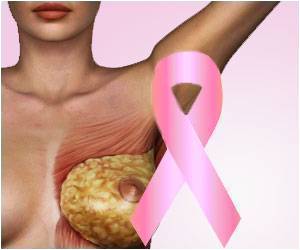
‘Higher amounts of fibroglandular tissue in dense breasts make it difficult to identity cancer cells with mammography.’
Tweet it Now
The study, the largest of its kind to investigate the association of air pollution with breast density, found that for every one unit increase in fine particle concentration (PM2.5), a woman's chance of having dense breasts was increased by 4%. Women with dense breasts were around 20% more likely to have been exposed to higher concentrations of PM2.5. Conversely, women with less dense, or breasts with more fatty tissue, were 12% less likely to have been exposed to high concentrations of PM2.5.
Breast density is measured by mammography and reflects the relative amounts of different tissue types in the breast.
Breasts with a majority of fatty tissue are easier to interpret by mammography and so abnormalities become easier to spot. Dense breasts contain a higher percentage of fibroglandular tissue which obscures mammography and makes it difficult to identity abnormalities such as a breast tumour.
Dr Lusine Yaghjyan, lead author from the University of Florida, said: "Our findings suggest that previously reported geographic variation in breast density could, in part, be explained by different air pollution patterns in urban and rural areas. Breast density is a well-established and strong breast cancer risk factor so future studies are warranted to determine if the observed associations are causal, which if confirmed may have implications for risk prevention."
Advertisement
Dr Yaghjyan explained: "We found a positive association between fine particle concentration exposure and breast density but an inverse association between ozone exposure and breast density. This is an intriguing result that warrants further investigation to unpick any possible biological mechanism that might cause ozone exposure to reduce a woman's chance of having dense breasts."
Advertisement
According to researchers, although causation cannot be established in this observational study, due to uncontrolled factors, these pollutants could potentially influence breast density by interfering with growth of cells in the breast and increasing the relative amount of fibroglandular tissue.
Women for this study were selected from the Breast Cancer Surveillance Consortium, a population-based cohort of women undergoing mammographic screening across the United States.
Mammographic data, including breast density, was included from women who were screened between 2001 and 2009. Breast density was measured using the BI-RADS system, a method developed by the American College of Radiology to standardize beast density measurements.
Air pollution data corresponding to the areas where the women lived before or around the time of their mammogram was obtained from the United States Environment Protection Agency.
Source-Eurekalert















